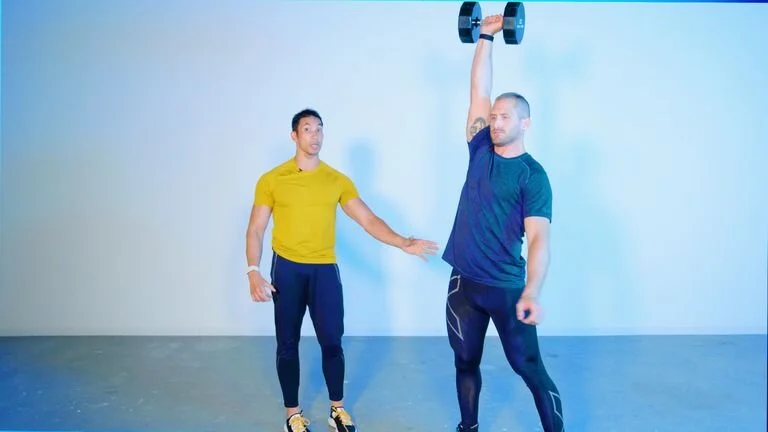An article from Men’s Health
The dumbbell snatch is a valuable addition to your training routine that can help build explosive full body power and strength, but are you sure you're even doing the exercise correctly?
For this movement, you shouldn't settle for anything other than perfect form—especially because it's such an essential exercise that can serve as one of the centerpieces of your training plan. Let Men's Health fitness director Ebenezer Samuel, C.S.C.S. and associate fitness editor Brett Williams guide you through the move's subtleties, saving you from the bad habits that are keeping you from unlocking your fitness potential.
Before pick up your dumbbell and swinging it over your head, take note that it's extremely important to pay attention the movement here. Hitting the proper form is essential to make sure you're getting the most out of the exercise—particularly because of the complexities of the movement. Let's break down everything you need to know.
It's All in the Hips
Eb says: This is meant to be an explosive move and a showcase for triple extension (extension and straightening at the hip, knee, and ankle). So don't let this become a deadlift to a biceps curl to a shoulder press.
Your arm during the dumbbell snatch is only assisting in the lift. What you're really doing, from start of snatch to beginning, is using lower-body explosion to propel the dumbbell overhead. So it starts with that first pull.
Keep the Weight Close
Eb says: Don't let the dumbbell swing out wide in front of your body after that initial deadlift hip pop. That's a waste of energy (not to mention a lot of stress on your shoulder).
Keep the momentum going vertically as aggressively as possible by starting to pull the dumbbell upwards. Keep it close to your body as if zipping up a coat. Think of pulling it close to your body the whole time, then, once it nears shoulder height, think of pulling it toward your chest.
Punch Up
Eb says: Once you've pulled it toward your chest, quickly think of punching the dumbbell upwards. Again, don't make this a shoulder motion, though. Think of sliding your torso underneath the dumbbell, then driving up with your legs. You should never feel the dumbbell snatch (or any snatch) intensely in your shoulders. This is a lower-body power move.
Tight Core
Eb says: You also shouldn't feel snatches in your lower back. Especially as you get heavy, you may feel your lower back start to arch. Battle that tendency. Think of keeping a strict, tall core and flexing your abs hard. This is especially important when the dumbbell is at its height.
Stay Light
Eb says: Don't fall into the trap of training insanely heavy for high reps when doing dumbbell snatches. Yes, this can easily be programmed as a move in some sort of metabolic conditioning routine. But as you fatigue your form is destined to fail, and there are so many moving parts that the failure won't be pretty.
So cap the weight to protect yourself. A smart start is keeping it to a weight that you can shoulder press, that way, when you start to rely on your shoulders more, they're ready to handle the load.

